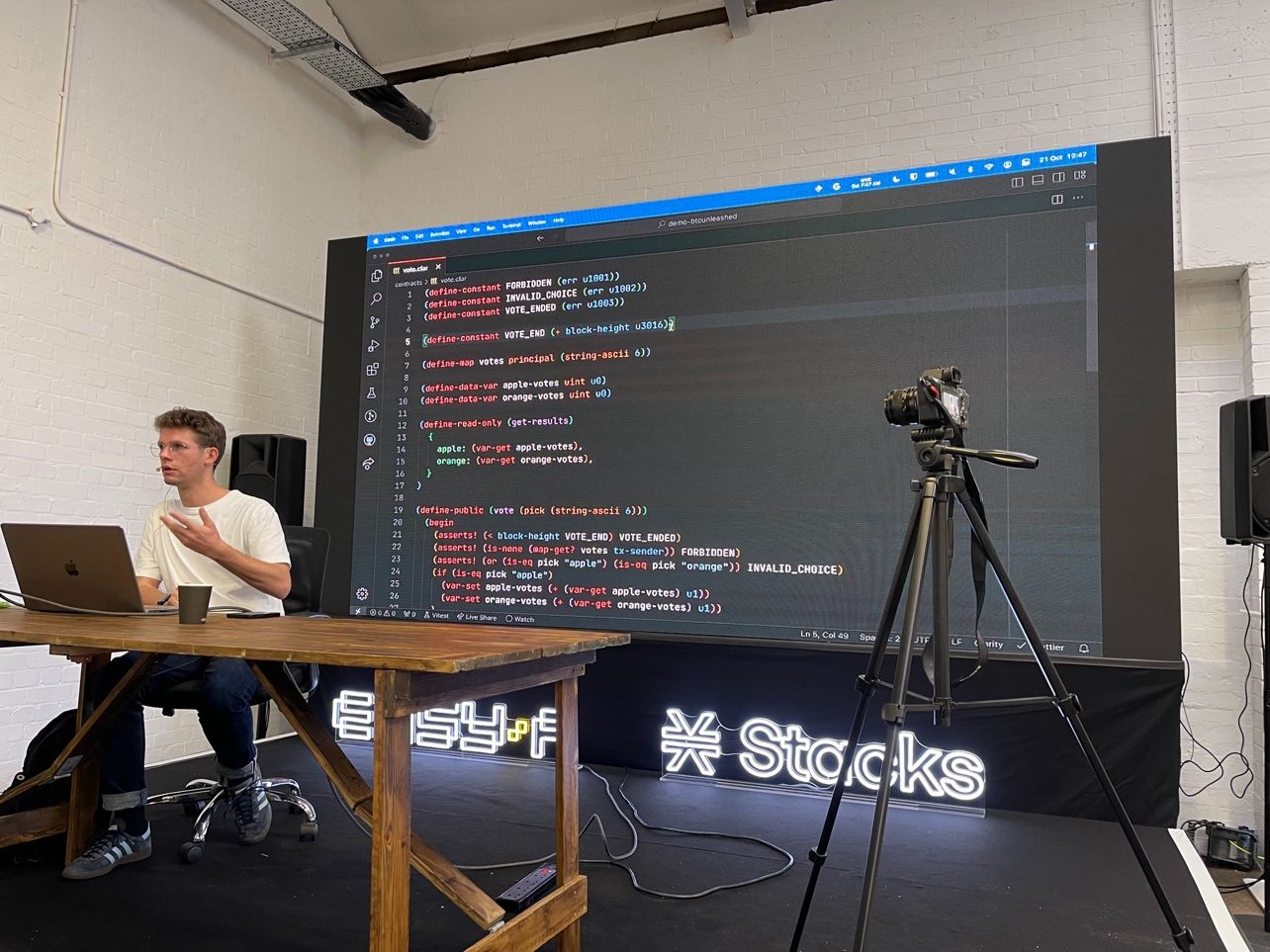Smart Contract on Bitcoin
Attending a "Smart Contract on Bitcoin" Hackathon was an eye-opening experience, offering a deep dive into the evolving world of blockchain technology and smart contracts. The event, hosted online, was a virtual hackathon named the "Building on Bitcoin Hackathon." It aimed to encourage participants to experiment and get familiar with Clarity, a developer environment designed for writing smart contracts on the Stacks 2.0 blockchain.
Learning and Experimentation at the Hackathon
The core of this hackathon revolved around building smart contracts using Clarity. As an interpreted language, Clarity brings smart contracts to Bitcoin. It's designed to be decidable, meaning developers can know, with certainty, from the code itself what the program will do. The source code written in Clarity is directly published on the blockchain, giving developers a safe way to build complex smart contracts on one of the world's most secure blockchains.
Clarity’s syntax is precise and unambiguous, allowing developers to predict exactly how their contracts will be executed. This feature ensures that contracts are not only secure but also reliable, as they are broadcasted on the blockchain exactly as written by developers. Such an approach guards against unexpected token transfers and other smart contract vulnerabilities.
STX Stacks Bitcoin Layer
A significant aspect of the hackathon was the introduction to the STX Stacks Bitcoin Layer. This layer enables the creation of smart contracts and decentralized applications directly on Bitcoin. The Stacks project aims to expand the Bitcoin economy and add more functionality as a Bitcoin layer. The Stacks layer ensures that transactions automatically settle on Bitcoin, thereby integrating apps and digital assets with Bitcoin's renowned security.
Future of Clarity and Smart Contracts
Clarity is not just a language but a movement towards safer and more predictable smart contracts. Recognizing the need for more secure smart contract languages, Clarity has been designed by experts from Princeton and MIT. The language aims to help the smart contract industry mature beyond its current state, promising deeper integration and visibility into Bitcoin in the future.
This Hackathon, with its focus on practical experience and experimentation, emphasized the importance of creating functional, secure, and well-documented smart contracts. It encouraged participants to think about scalability and future developments of their projects, even beyond the hackathon.
Attending such an event was not just about learning the technicalities of smart contracts or the specificities of a programming language like Clarity. It was about being part of a community that is pushing the boundaries of what's possible with Bitcoin and blockchain technology, contributing to a more secure and efficient digital future.
For those interested in exploring more about smart contracts on Bitcoin and the Clarity programming language, you can visit the following resources:
